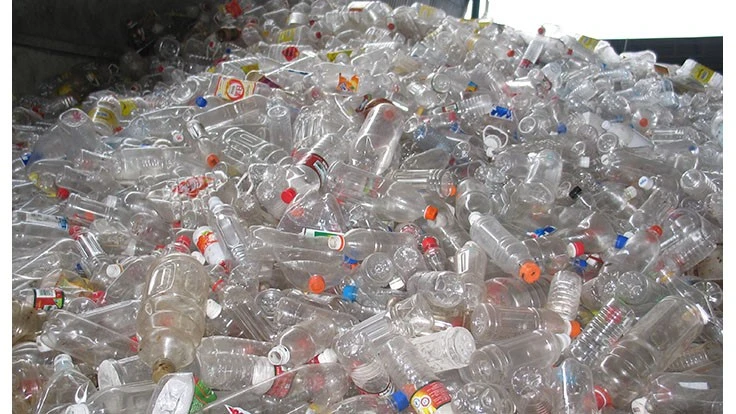
Recycling Today archives
The U.S. recycling rate for postconsumer polyethylene terephthalate (PET) increased to 28.6 percent in 2021, up from 27.1 percent in 2020, while the North American rate (U.S., Canada and Mexico) increased to 36.8 percent, up from 34.2 percent in 2020, according to a report released by the National Association for PET Container Resources (NAPCOR), Charlotte, North Carolina.
NAPCOR notes a number of first-time achievements in its "2021 PET Recycling Report," including the largest amount of postconsumer PET ever collected, with PET bottle collection in the U.S. exceeding 1.9 billion pounds. Additionally, thermoforms collected for recycling in the U.S. and Canada reached 142 million pounds, setting a new record.
“These rates mark two major milestones in the growth of PET awareness, appreciation, use and reuse,” NAPCOR Executive Director Laura Stewart says. “The 2021 increase is a powerful indicator that pandemic-driven disruptions to recycling services are getting back on track. It is also important to point out that the North American rate is over the 30 percent recycling threshold suggested by the Ellen McArthur Foundation. This is viewed by many industry pundits as the postconsumer benchmark for proving that recycling works in practice and scale across multiple regions representing at least 400 million inhabitants.”
“The rebound in the amount of PET bottles collected in 2021 is encouraging,” says Tom Busard, NAPCOR chairman and chief polymers and recycling officer for Plastipak Packaging Inc., Plymouth, Michigan, and president of Clean Tech, Plastipak’s recycling affiliate. “PET recycling is working, but there is a need to see increased collection to meet both legislated and voluntary recycled content demands of the future.”
Supporting the conclusion that COVID-19 disruptions to PET recycling have been overcome, NAPCOR points to these findings in its report:
- The volume of PET collected via deposit redemption systems, or bottle bills, increased by 46 percent compared with 2020.
- For the second consecutive year, more rPET was used in the Food/Beverage and Nonfood/Beverage Bottle categories, surpassing demand in the rPET fiber market in the U.S. and Canada.
- Food/Beverage alone took the largest share of rPET consumption.
- The U.S. rPET textile fiber industry faced higher prices and more competition for clear rPET in 2021 but still achieved total rPET fiber production of more than 1 billion pounds by sourcing greater volumes of colored rPET flake (57 percent) and greater volumes of postindustrial rPET flake (11 percent) relative to 2019.
- Evidence points to a movement toward thermoformed tray-to-tray circularity, with 11 million pounds of PET thermoforms having been used by thermoform converters to produce more of this type of packaging. Also, a record 142 million pounds of PET thermoforms were collected for recycling, 73 percent of which were processed by PET reclaimers in the U.S. and Canada.
“At NAPCOR, we continue our work to educate the public on how PET differentiates itself from other packaging formats, allowing brand owners to leverage its recycling value,” Stewart says. “Beyond being recyclable over and over again, PET has often-overlooked benefits, including decreased food spoilage, reduced greenhouse gas emissions and an overall stronger environmental profile compared to other packaging materials. The more we increase awareness of PET and motivate proper, consistent recycling levels, the closer we will get to put the U.S. on par with global recycling rates and, most importantly, the greater the impact we will have on the planet.”
The "2021 PET Recycling Report" can be purchased through NAPCOR’s website.
Latest from Recycling Today
- BMW Group, Encory launch 'direct recycling’ of batteries
- Loom Carbon, RTI International partner to scale textile recycling technology
- Goodwill Industries of West Michigan, American Glass Mosaics partner to divert glass from landfill
- CARI forms federal advocacy partnership
- Monthly packaging papers shipments down in November
- STEEL Act aims to enhance trade enforcement to prevent dumping of steel in the US
- San Francisco schools introduce compostable lunch trays
- Aduro graduates from Shell GameChanger program





